The Fujifilm X-E1 review
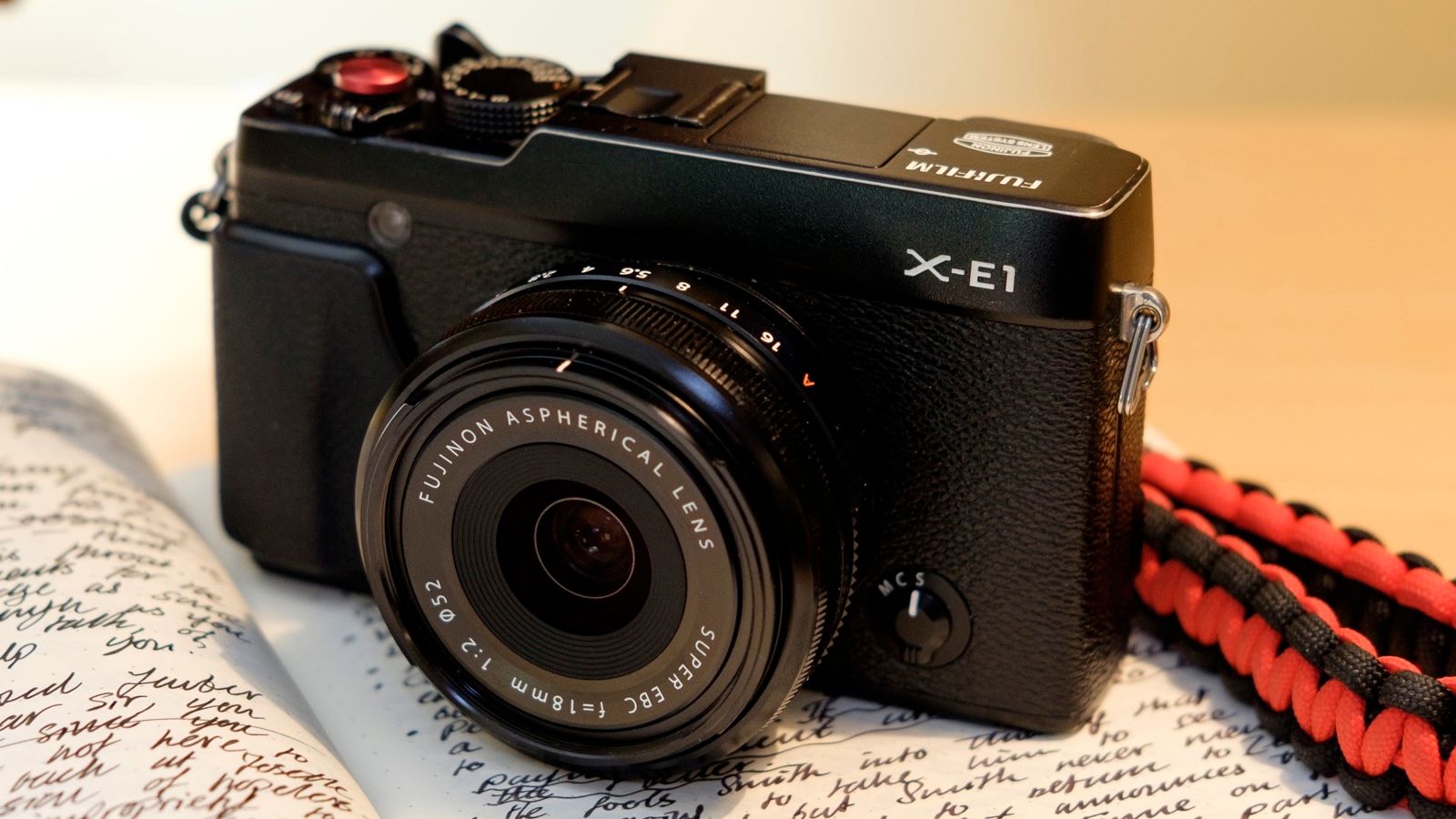
Although this camera is now considered obsolete, it’s only after a year of intensive use that I feel qualified to review it. Is the X-E1 competitive today? Almost certainly not. But is it a classic?
My photographic background
When I started to take my mountain photography seriously in 20151, I had a couple of false starts. I wanted to use my vintage Pentax lenses, so I thought a Pentax K-x DSLR would work for me. It felt cumbersome and unrefined compared with my 35mm film Pentax, with a small, dim viewfinder. Then I discovered the Fujifilm X30, a very good little compact point-and-shoot that I thought would be superb for mountain photography. It was, but I soon realised I needed interchangeable lenses and better low-light performance.
My requirements changed in a relatively short space of time. It took me a little while to find my feet and learn what I really needed. Between 2014 and 2015, I made the transition from clueless amateur to a semi-professional working photographer. I don’t make money from my images directly, but as an outdoor writer I have to be able to produce quality photographs for editorial use. My images are used online and in print magazines, sometimes reproduced as double-page spreads. It’s a competitive field and writers who can’t take a good picture don’t get as many commissions. The learning curve is steep and I’m still climbing it now.
So when I took another glance at the Fuji lineup, the X-E1 (released 2013) looked attractive. It had the same mechanical controls as my 35mm film SLR, but top-notch image quality. Would this be the right camera for me?
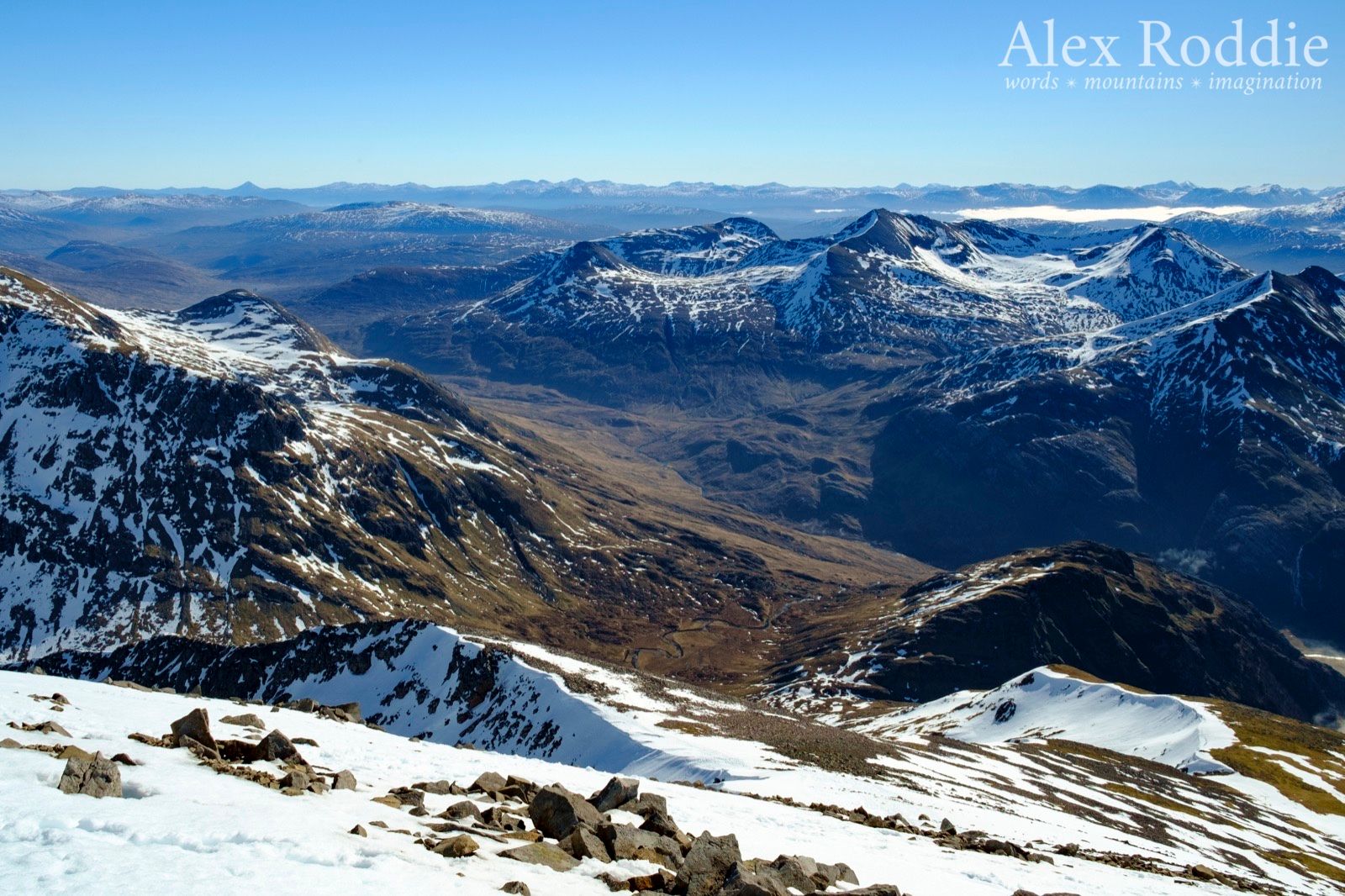
First impressions
I found my X-E1 used on EBay, together with the 18-55mm kit lens, for about £200 in September 2015. That’s excellent value for a compact system camera with a 16MP APS-C sensor and access to one of the best lens systems in the mirrorless world.
Fuji cameras look good. You might think this shouldn’t be a factor when it comes to shooting with them, but form follows function in this case. Those ‘retro’ mechanical controls define the experience of using the camera. And the quality metal construction will outlast the plastic offerings from other manufacturers, even as it gradually acquires a dignified patina with age. Personal choice plays a big role here, of course.
I won’t go into the specs; they’re an easy Google search away, and hundreds of other X-E1 reviews delve into precise tests of image quality and so on. This won’t be that kind of review.
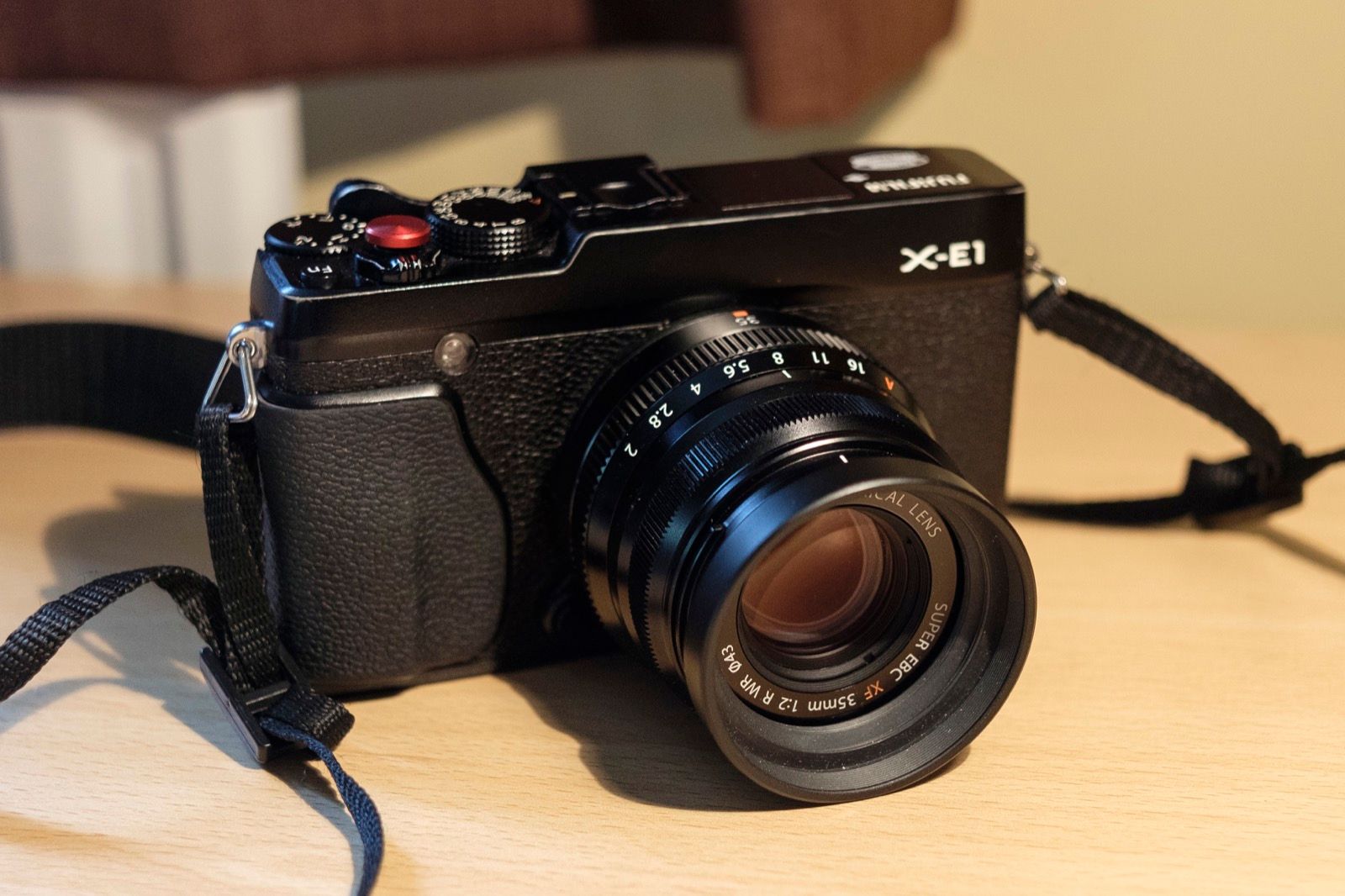
The X-E1 looks rather like a vintage 35mm rangefinder camera. The metal top deck contains the pop-up flash, the mechanical shutter-speed dial, the shutter release, a function button, and the exposure-compensation dial. I have the function button set to ISO. It feels awkward going into a menu to set ISO when the other two thirds of the exposure triangle are set with mechanical controls, but if you want a real ISO dial you need one of Fuji’s newer, higher-end cameras.
The front of the camera is pretty clean: a metal lens mount, rubber grip, the X-E1 logo, and the autofocus selector switch (with positions for AF-S, AF-C, and Manual). On the back you will find the LCD (which is easily scratched), plus a range of controls, very much like the buttons you’ll find on any other DSLR or mirrorless camera.
There is a viewfinder in the top-left corner. Apparently right-eye shooters love this layout, but I always compose with my left eye so it makes no difference. Even three years after release, this electronic viewfinder is surprisingly good – it works well in normal light, and gives you an immediate preview of the exposure. In-view information includes exposure values, histogram, electronic level, and focus peaking for precision manual focus2. It lags a bit in low light, and I find I have to shield it with a hand in very bright sunshine, but it’s quite usable in most conditions and I have come to prefer it to an optical viewfinder. The live histogram is particularly handy in difficult lighting conditions.
It takes a standard Fujifilm battery. Reviewers seem to like complaining about battery life in these cameras, but I’ve had no issues, even on long treks. I just carry a couple of spares and keep them topped up when I can.
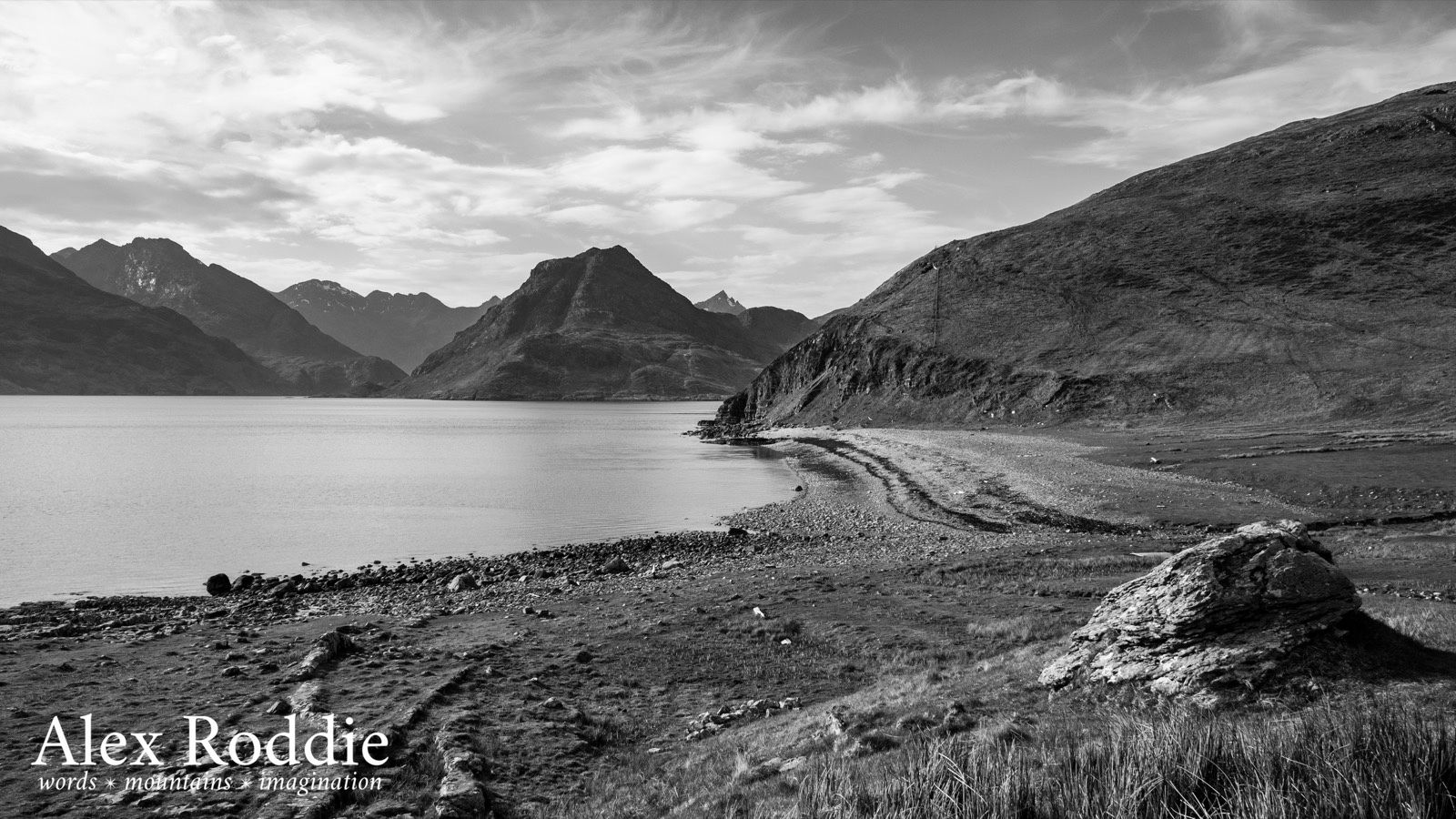
On the hill
My X-E1 has accompanied me for hundreds of miles throughout Wales, Scotland, and the Pyrenees. It has withstood severe winter weather and extreme heat, and has captured thousands of frames without a hiccup.
The best thing about the X-E1 for mountain photography is its compact size. It’s smaller and lighter than most DSLRs, but it offers similar (or better) image quality. It is also competitive with other mirrorless cameras although some systems, such as Sony’s APS-C range, have smaller camera bodies. I’ve found the ergonomics to work out pretty well on the hill – it’s even usable with gloves – although I have added a small thumb grip to help balance when using the zoom lens.
Although I haven’t made any huge prints, I know I could if I wanted to. The X-E1 is more than capable of producing the image quality I need for published photos in print magazines. Shooting in raw gives you an enormous amount of flexibility, too, and is essential for advanced tasks such as astrophotography. Early reviews said that Fuji RAF files were difficult to process in Lightroom or Adobe Camera Raw, but I think these issues have all been ironed out by now. Noise is extremely well controlled throughout the entire ISO range, but I don’t go above 3,200 unless absolutely necessary.
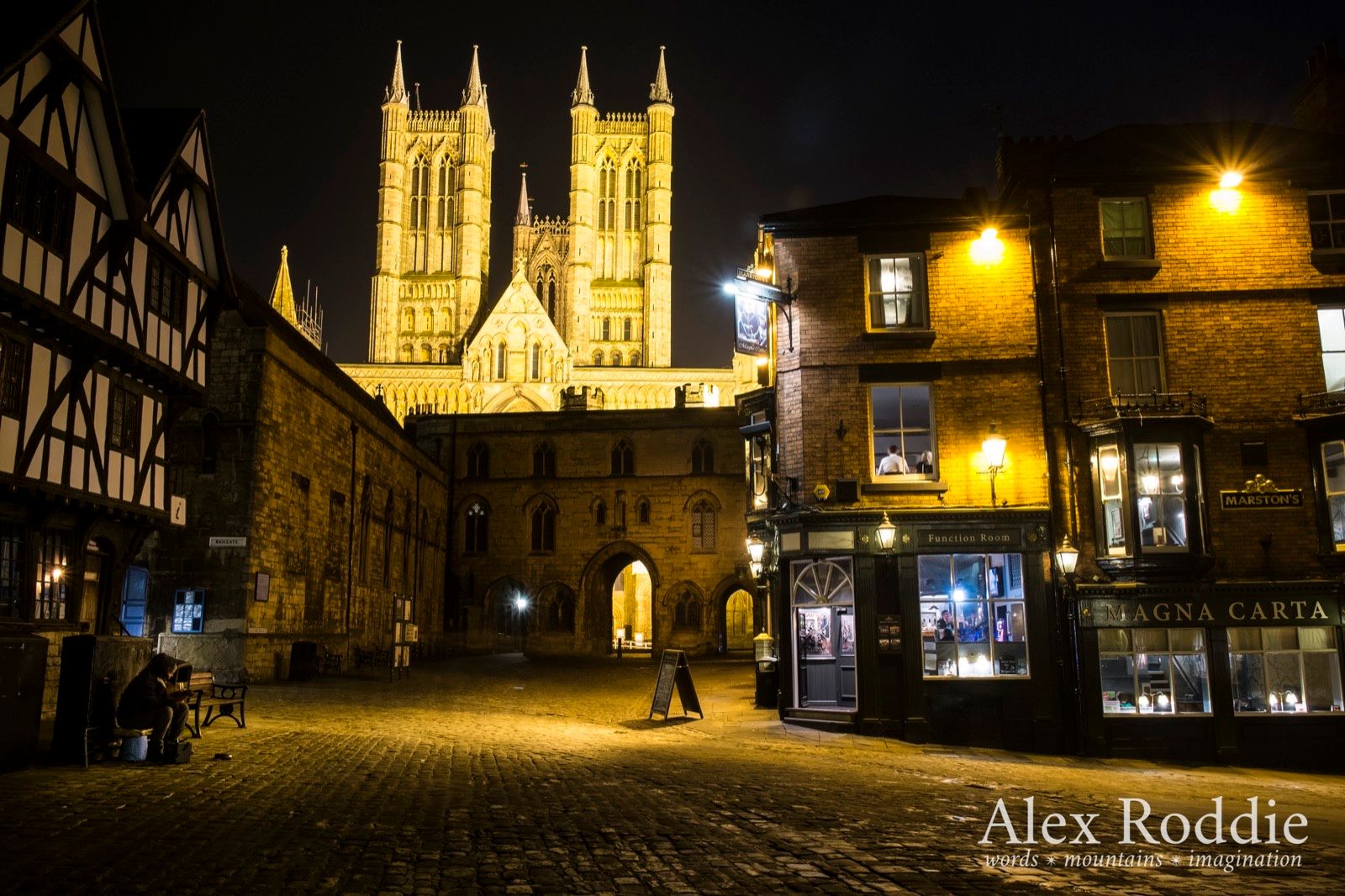
The built-in film simulation modes are very useful when shooting JPEG. I’ve come to prefer Astia with +2 sharpness, -2 noise reduction and +1 colour. If I want to quickly share a photo on Instagram while I’m still on the trail, a JPEG will do just fine. I have noticed that auto white balance often comes out a little cool (I often use one of the WB presets instead, such as ‘daylight’ or ‘cloudy’). Auto-exposure is usually quite accurate when metering in ‘multi’ mode.
This camera encourages you to shoot in manual or aperture priority. On a bright mountain day I’ll keep the lens at f/8 most of the time with auto ISO (defaulting to 200), using the exposure compensation dial to make small local adjustments depending on the light. If using a telephoto lens it’s easy to set shutter speed to 1/500 or 1/1000 to cut out camera shake. I will always use full manual mode when composing a landscape from the tripod or shooting starscapes at night.
Away from the mountains, I love using this camera for street photography. It’s small and discreet, and helps me get closer to my subject without attracting attention. Although it can occasionally be a little slow to acquire focus3, and it takes a couple of seconds to write a file to the SD card, I’ve found it fast enough for all but the most demanding use. Burst mode is quite usable for occasional wildlife photography – although it can take quite a while to clear the buffer after you’ve fired off a burst of JPEG+RAW shots! Clearly this is not a camera for the pro wildlife photographer, but for someone like me, who mainly shoots landscapes in a slow and methodical manner, it’s a good fit.
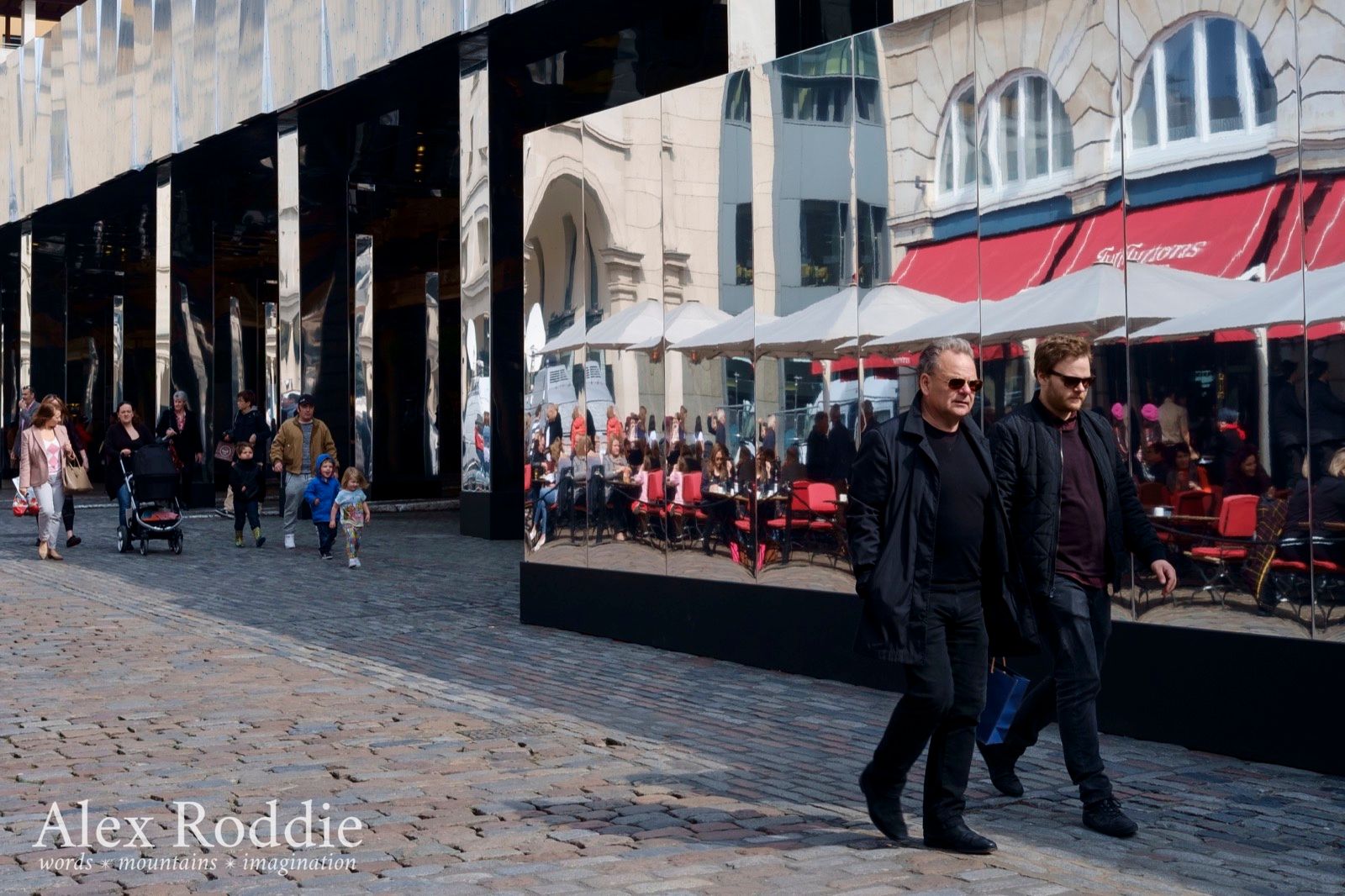
Durability
The camera was used when I bought it, but in good condition. Over the last year I have used it quite heavily and have found that the painted finish chips and wears on the corners quite easily, especially along the edges of the top deck, revealing the bare metal chassis underneath. The on/off switch around the shutter release is also showing signs of wear, and the plastic thumb grip is starting to go shiny. To be honest, this doesn’t bother me – it’s quite an attractive patina.
One area where it isn’t ageing so gracefully is the rubber front grip, which is glued in place and starting to come off in one corner. I have no idea if it’s possible to glue this grip back in place or replace it, but I think it’ll come off entirely in another year or so.
The X-E1 is not weather sealed. I always try to shield it from the elements as best I can, but I think I’ve been lucky – I have used it in severe winter weather several times, and had a bit of a scare with condensation once. You don’t need to baby it, but it won’t thank you for shooting in a snowstorm or heavy rain.
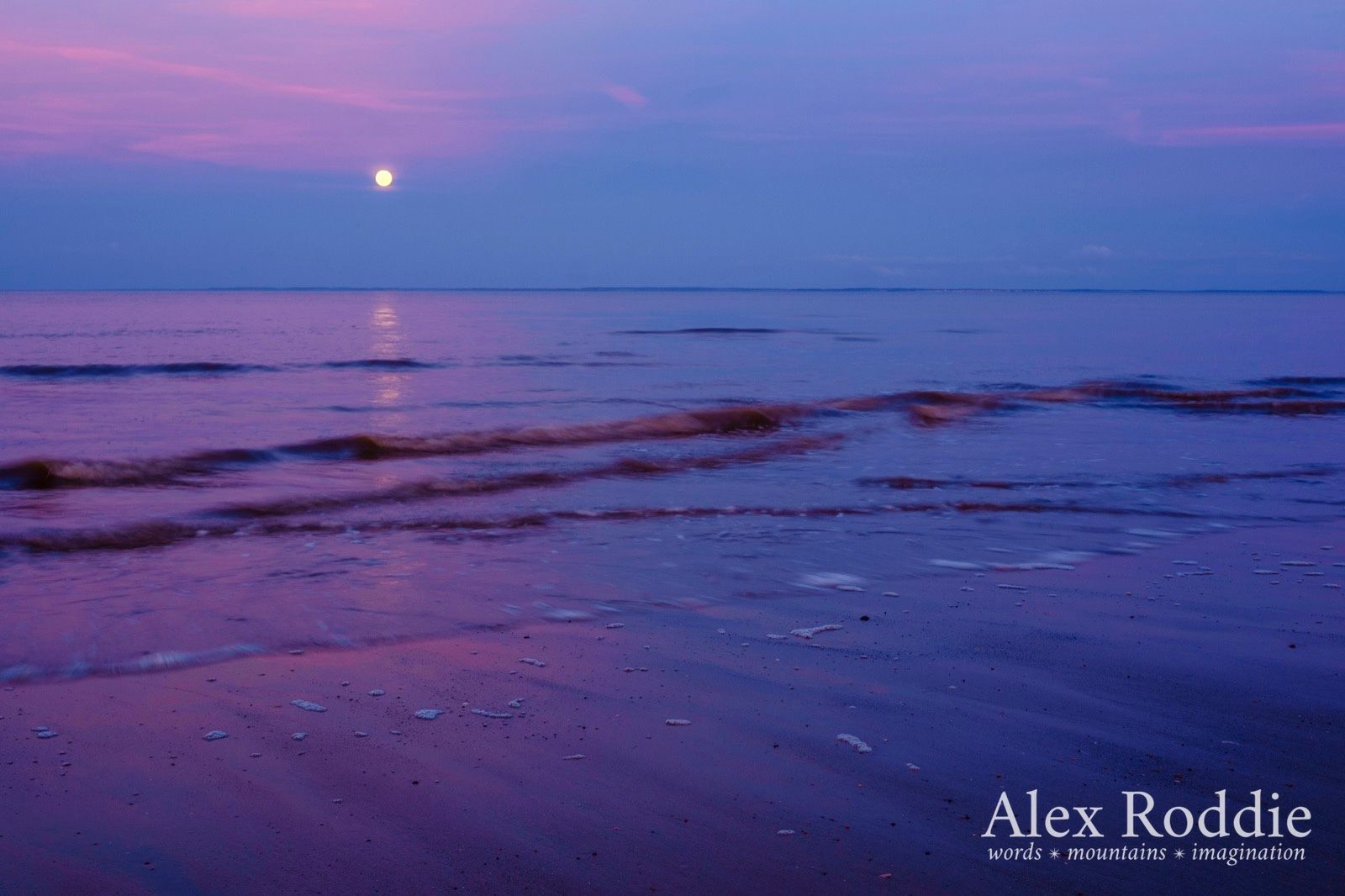
Lenses
Initially I just used the included 18-55 lens, but I never really liked it. On paper it’s pretty good: although the aperture varies between f/2.8 and f/4 depending on focal length, that’s about a stop faster than the average kit lens. I have found image quality to be very good at all focal lengths except 18mm, which was prone to softness at f/8 and smaller (possibly due to diffraction). Manually focusing at infinity – a vital technique for astrophotography – was frustrating because focus is by wire, and the focal point would always seem to ‘jump’ forward or back a little upon pressing the shutter. Nailing infinity focus is almost impossible with this lens.
The 18-55 has excellent build quality but I disliked the unmarked aperture ring, which is free to turn around the lens barrel. Most other Fuji lenses have traditional marked aperture rings. It’s also a heavy lens and tends to make the camera feel somewhat unbalanced.
I soon purchased the 27mm f/2.8 pancake, which is extremely compact. Sadly this lens lacks an aperture ring at all! Although I exclusively used this lens in the Pyrenees, and captured some very good images, it’s more suitable for street photography. On the hill I often found myself wishing I had a slightly wider or slightly narrower field of view.
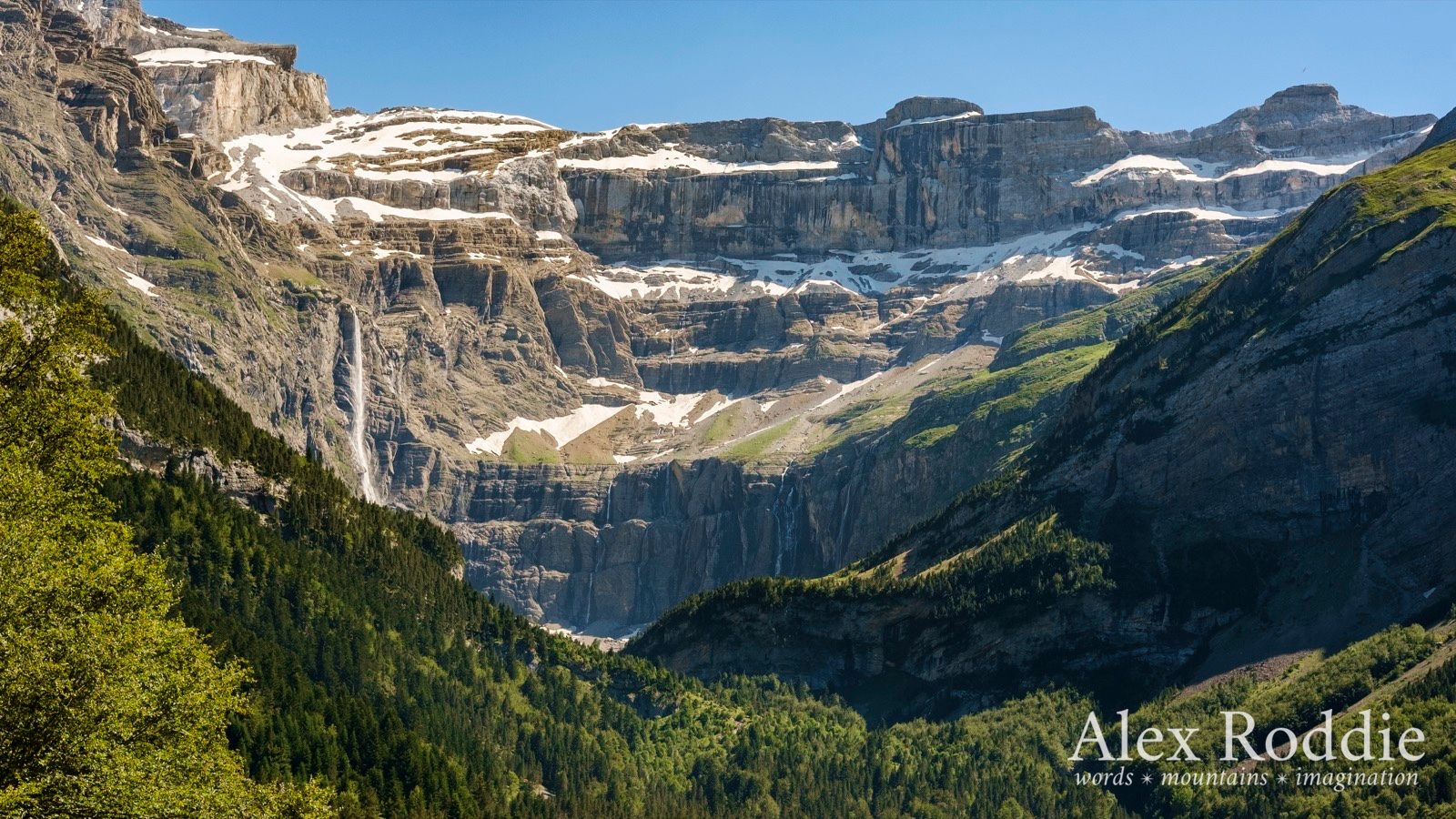
I have since sold both lenses and now own a set of primes: the new 35mm f/2 WR, the original 18mm f/2 pancake lens, and the Samyang 12mm f/2 (which is all-mechanical and is a dream for astrophotography). I also use a vintage 200mm f/3.5 telephoto prime with an adapter, but it’s heavy so I never take it on the hill.
While I don’t have personal experience of most Fuji lenses, it is an excellent lineup with a well-deserved reputation for both build quality and image quality. Some of the lenses are expensive, but if you don’t need the very largest aperture at every focal length you can actually build up a good collection of glass without spending too much. My personal opinion is that the compact primes are a better fit with the rangefinder-style bodies than the zoom lenses.
Conclusion
The X-E1 may not be the latest or greatest in the X Series, but it made me love photography again. It feels rather like a 35mm film camera in use, with the same intuitive manual controls – but with all the advantages of digital, and stellar image quality. I have taken the best photographs of my life with this camera, not because of its technical capabilities but because it doesn’t get in the way and allows me to visualise photos without worrying about my gear. It’s small and light enough that I can carry it anywhere.
If you’re concerned with specs and speed then the X-E1 may seem woefully outdated. Autofocus is slower than the latest Fuji cameras, and write speeds are pretty slow too. But that only matters if you are shooting in fast-paced, high-pressure environments such as wildlife photography, weddings, or sports/action. The mountain photographer operates at a slower pace. Even the street photographer will benefit from slowing down and looking for the decisive moment, rather than blasting away at full-auto in the hope of capturing somethings worthwhile.
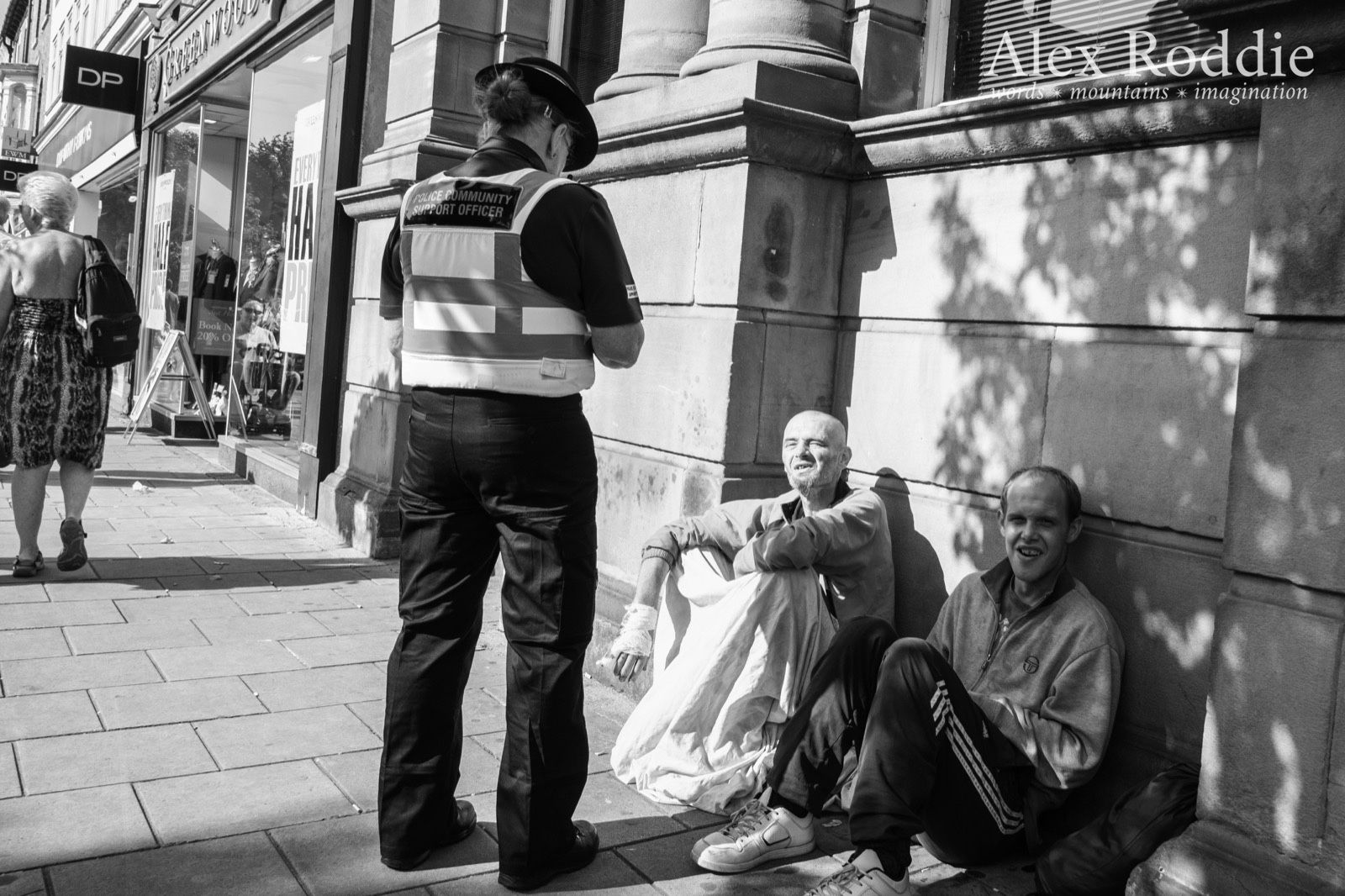
In short, I don’t think the X-E1 is obsolete yet. Although its specs have been surpassed by newer Fuji cameras, it’s still perfectly capable of doing what it was designed to do. Perhaps classic design never becomes obsolete.
My year working with the X-E1 has been fantastic, but it’s time to move on. I need a weather-sealed camera for the coming winter season. The X-T1 has replaced the X-E1 as my primary camera for this reason alone, but it has other features I’ll find handy too, such as a much better viewfinder, built-in intervalometer and tilting screen (none of which are essential). But the X-E1 is not going to be retired. It’ll remain in service as my backup body for mountaineering and backpacking trips, and I’ll continue to carry it as my everyday camera for street and documentary photography, where its light weight and low profile are advantages. It fits in my smallest camera bag with the 18mm lens, too, which is something the X-T1 can’t do.
Sometimes a camera is about more than the specs. If you can find a used one in good condition, I recommend it – the X-E1 is often a bargain nowadays. And while it may lack the speed and some of the features of the newer Fujis, it’s capable of producing absolutely stunning images, if you have the vision and the skills to capture them.
- …after a six-month experiment with shooting film, to reboot my photographic knowledge and process. It was an interesting experience but I’m now 100% digital. ↩
- This feature is the X-E1’s secret weapon, making it easy to use vintage manual lenses. The X-E1 works far better with manual Pentax lenses than a Pentax DSLR! ↩
- Zone focusing is great for street photography, and much faster. Just set it to f/8 and focus at about 5m, with a wide-angle lens, and everything will be in focus. ↩
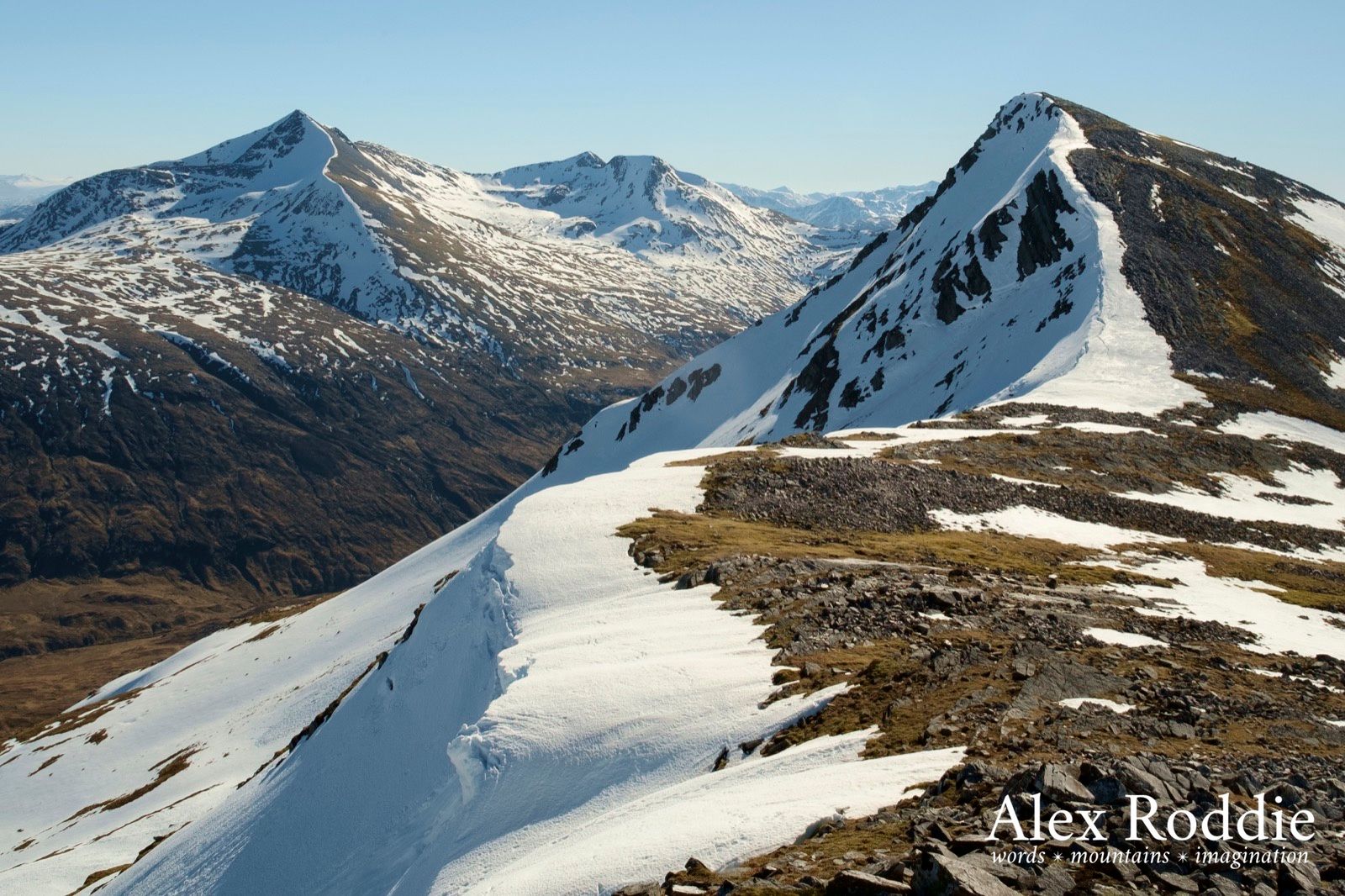
All images © Alex Roddie. All Rights Reserved. Please don’t reproduce images in this article without permission.
Alex Roddie Newsletter
Subscribe here to receive my occasional personal newsletter in your inbox. (For the fun stuff, please consider subscribing to Alpenglow Journal instead!)




